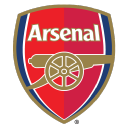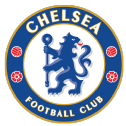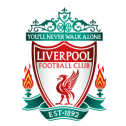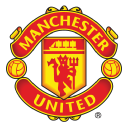The most recent transfer window was unlike any other before it as world-class players like Lionel Messi and Cristiano Ronaldo moved clubs at the same time. But that got us thinking…
Drawing inspiration from David Schoenfield’s look at the biggest star every MLB team has ever traded, we thought we’d look at the world of soccer. And, more specifically, the top clubs in the English Premier League.
Ronaldo has now returned to Manchester United from Juventus for €15m plus add-ons, but it wasn’t so long ago that he was departing Old Trafford for Real Madrid. Liverpool have seen some top stars move on in recent years, but were any more important than Philippe Coutinho? And did Arsenal regret letting their star striker Robin van Persie leave for Man United in 2012? Yes, yes they did.
Here’s a rundown of the so-called “Big Six” clubs in the Premier League and which player we deem to have been the biggest star to have been traded.
– Stream ESPN FC Daily on ESPN+ (U.S. only)
– Don’t have ESPN? Get instant access

The transfer: Robin van Persie to Manchester United (€30.7m), August 2012
Others to consider: Marc Overmars to Barcelona (€29.3m, 2000), Patrick Vieira to Juventus (€20m, 2005), Ashley Cole to Chelsea (€7.4m, 2006), Thierry Henry to Barcelona (€24m, 2007), Cesc Fabregas (€34m, 2011)
Arsene Wenger had picked up the forward from Feyenoord (€3m in the summer of 2004) with the intention of using him in a variety of roles up front. Technically gifted, quick and an underrated link-up player, the Dutchman eventually settled as a centre-forward for Arsenal but struggled with injuries and never played more than 28 league games in a season until his final year when he bagged an incredible 30 goals in 38 games. Still, a frequent scorer of spectacular goals, Van Persie was a firm fan favourite at Arsenal and the sudden move to rivals Manchester United was a real bombshell (his refusal to commit to a new long-term deal being a catalyst for the move.)
Today it’s less controversial to see a star player moving from one top team to another and although Arsenal had finished third — admittedly 19 points behind Manchester United — in Van Persie’s last season, the club had title ambitions of their own. Signing the No. 1 player from one of your main rivals, who also happened to be the Premier League top scorer, was a big deal in more than just the financial sense.
Did the transfer pan out for the player? Reasonably well. The arrival of the prolific goal scorer helped Manchester United regain the Premier League title (their last to date) from their “noisy neighbours” Man City in Sir Alex Ferguson’s final season as manager. Van Persie claimed another top scorer title with 26 league goals and won the club’s Player of the Year award. But, always prone to injuries, the Dutchman’s impact faded as recurring muscular and ankle injuries kept him out for long spells of his last two seasons at Old Trafford.
1:33
Steve Nicol and Craig Burley discuss their expectations for Eden Hazard at Real Madrid this season.

The transfer: Eden Hazard to Real Madrid (€100m), July 2019
Others to consider: Arjen Robben to Real Madrid (€35m, 2007), Kevin De Bruyne to Wolfsburg (€22m, 2014), David Luiz to Paris Saint-Germain (€49.5, 2014), Mohamed Salah to Roma (€15m, 2016)
Hazard joined Chelsea with the reputation of being the No. 1 young player in European football. He’d already captured the Ligue 1 title with Lille, helped himself to three Player of the Year awards on the trot, and scored 20 goals from an advanced midfield position during his last season. Still just 21 when arriving at Stamford Bridge, the Belgium international fulfilled the huge expectations almost instantly with some dazzling performances from the start.
He went on to be a regular fixture for Chelsea — typically playing as an inverted winger from the left — for seven seasons, becoming a Premier League champion twice in the process, winning the Premier League Player of the Season in 2015 and scoring 110 goals in 352 games, before Real Madrid came knocking. Hazard joined the Madrid giants in the summer of 2019 and, though he had just one year to go on his Chelsea contract, the West London side were handsomely rewarded with a transfer fee that could reach €160m with add-ons.
Did the transfer pan out for the player? Definitely not. Though Hazard can rightfully claim a spot in the Premier League Hall of Fame for his consistent brilliance for Chelsea, he’s yet to make a mark on LaLiga. In fairness, Hazard has spent the majority of his time at Real Madrid in the treatment room, but when given the opportunity — he’s started four of the club’s five opening league fixtures — he hasn’t looked anywhere near like his old self.

The transfer: Philippe Coutinho to Barcelona (€135m), January 2018
Others to consider: Fernando Torres to Chelsea (€58.5m, 2011), Luis Suarez to Barcelona (€81.7m, 2014), Raheem Sterling to Manchester City (€63.7m, 2015)
The Brazilian’s career path has been a rather curious one. Coutinho — a star for his country at youth level — joined Liverpool from Inter Milan in January 2013 having spent a rather unremarkable time with the Italian giants (as well as half a season on loan at Espanyol). And while Liverpool have justifiably received praised for their cautious but smart “Moneyball” approach to the transfer market, it’s hard to believe that anyone at Anfield would have expected their €13m signing to move on for over €100m-plus five years later.
Coutinho was a brilliant signing for Liverpool, standing out in the Premier League as well as in Europe. His excellent technical skills, combined with an ability to play in a variety of roles in midfield and up front, made him an extremely useful team player, while his creativity and mesmerising runs made him a fan favourite. It’s still up for discussion as to whether the Brazilian was ever genuinely world class for Liverpool but the club certainly missed his impact.
Although Barcelona paid a lot to sign Coutinho, his move to Spain was somewhat ugly. After Liverpool turned down repeated overtures from Barca in the summer of 2017, the player — who had penned a new five-year contract a few months earlier — threatened to go on strike if he didn’t get his move away. Eventually he departed in January 2018 for a fee that could reach €160m in add-ons.
Did the transfer pan out for the player? Not at all. Considering the huge fee, Coutinho’s move is up there among the most expensive flops in history. He hit the ground running with Barcelona — after recovering from an ankle injury that surfaced during his medical – to score eight goals in his first half a season. But since then, Coutinho’s impact on top level football has faltered.
He looked like his old self in an excellent end of season spell while on loan at Bayern Munich in 2019-20, scoring twice in the Champions League quarterfinal trouncing of, ironically, Barcelona, and came on as a late substitute in the final to claim a winner’s medal. However, he hardly gets a chance under coach Ronaldo Koeman now, often behind promising La Masia products in the pecking order.

The transfer: Leroy Sane to Bayern Munich (€45m), July 2020
Others to consider: Carlos Tevez to Juventus (€9m, 2013)
The winger’s move from the Etihad to Bayern Munich is arguably the sole example of Manchester City losing a player they’d rather have kept since the club was taken over by their UAE owners. Sane joined Manchester City from Schalke 04 in the summer of 2016 as one of the most promising wide attackers in European football. Already a full Germany international, the then-20-year-old enjoyed a fine debut season at the Etihad — often given the confidence by Pep Guardiola to occupy his favourite left-wing position from the start. In subsequent seasons, Sane played his part in the club’s back-to-back Premier League title wins, was voted the PFA’s Young Player of the Year in 2017-18 and frequently impressed in big fixtures, both domestically and in the Champions League.
Despite performing well for City, Sane was regularly linked to Bayern towards the end of the 2018-19 season and a deal was reportedly close to being struck between the clubs in the days leading up to the 2019 Community Shield final. In a moment of bad luck, Sane tore his ACL after just 10 minutes of that game and was ruled out for almost a year, making his comeback in June 2020 in a home match against Burnley. A few weeks later he finally made his €45m move back to the Bundesliga.
Did the transfer pan out for the player? Sane had a stop-start first season with Bayern, perhaps not unsurprisingly given it was his first after serious injury. Often criticised for limited defensive input and lack of attacking energy during the last campaign, the 25-year-old has looked back to his best under new coach Julian Nagelsmann — opening the scoring with an excellent free-kick in the 7-0 drubbing of Bochum last weekend.
0:38
Shaka Hislop and Craig Burley discuss Cristiano Ronaldo’s fast start back at Manchester United, with four goals in three matches.

The transfer: Cristiano Ronaldo to Real Madrid (€94m), July 2009
Others to consider: David Beckham to Real Madrid (€37.5m, 2003)
One of the few genuine world stars in the game who have made the move between two giant clubs with comparable ambitions while still being in his prime. Cristiano Ronaldo left United following years of links with Real Madrid, whose long and public chase for the Portugal international caused the Premier League club to launch a complaint with FIFA — whose president, Sepp Blatter, also got involved by labelling their failure to let the player have his way as “modern slavery.”
Then only 24, the forward was already a star at Old Trafford, having made the €19m move from Sporting Lisbon as a raw teenager with bags of physical and technical potential in 2003. Not only was his spectacular individual style of football comparable to United legends Ryan Giggs and George Best but he helped the club to win three Premier League titles as well as a Champions League trophy.
While United clearly served Ronaldo well as a “commercial partner,” Real Madrid was the only club in the world which could help develop his brand and exposure even further (as it did with David Beckham some years earlier).
Did the transfer pan out for the player? It most certainly did. Perhaps even more impressive than the four Ballon d’Or awards, two LaLiga titles and four successful Champions League campaigns (three of them back to back from 2015-18), are the 450 goals in 438 competitive games and 132 assists. Those numbers are remarkable enough for an out-and-out striker, but it’s hard to comprehend such a feat being achievable for an all-round forward who took shifts dropping deep and roaming wide areas to look for the ball too. Even when it was time to move on, Juventus paid €112m to sign him at the age of 33 in 2018 and now United have him back at Old Trafford.
1:08
Steve Nicol is quite skeptical Gareth Bale will be able to reinvigorate his Real Madrid career under Carlo Ancelotti.

The transfer: Gareth Bale to Real Madrid (€101m), September 2013
Others to consider: Dimitar Berbatov (to Manchester United €38m, 2008), Luka Modric (to Real Madrid €35m, 2012)
Having just turned 19, Bale arrived at Spurs in the summer of 2007 from Southampton as a promising left-back. Three years later he was moved further up the pitch to perform duties as a left winger before he ended up as an inverted winger — the role in which he’s still most commonly deployed. While Bale has always been recognised for his crossing, dribbling and pace, he became a world-class striker of the ball at Spurs and also developed the movement and runs to make him an added goal threat.
The Wales international took his game to another level during his last season at Spurs when he scored an outstanding 21 goals during the 2012-13 campaign — several of which were spectacular efforts from distance. The goals and his performances failed to get Spurs into the Champions League, but they did help Bale capture both the Player of the Year and Young Player of the Year awards.
Once again the draw of Real Madrid proved too strong for a Premier League star. Following weeks of intense negotiations, Bale finally became a Real Madrid player in a transfer worth a world record fee of €101m.
Did the transfer pan out for the player? Yes. Though most fondly remembered for his first years at the club, Bale has been crucial for Real Madrid in a successful period. He netted a extra time goal in the 2014 Champions League final against Atletico Madrid, and scored two coming off the bench four years later when Liverpool were beaten 3-1 in Kiev in the same competition. Despite the occasional controversies over form, fitness and whether he’d rather be playing golf, Bale’s return of 106 goals from 254 competitive matches for Real Madrid are highly respectable figures by anyone’s standards. With his massive wages causing issues for the club, he returned to Tottenham on loan in 2020-21 and showed he can still impress by scoring 16 goals in 34 games, but will likely leave Madrid once his contract expires next summer.
